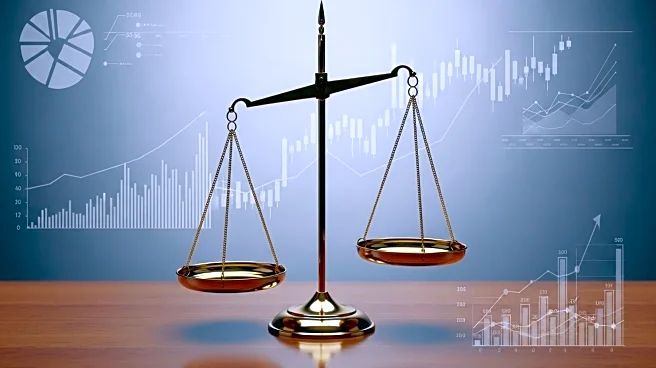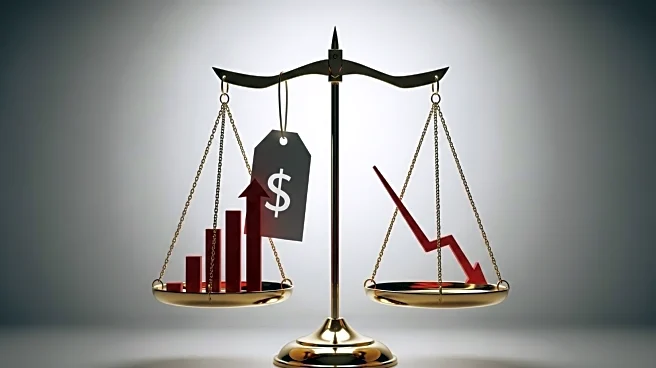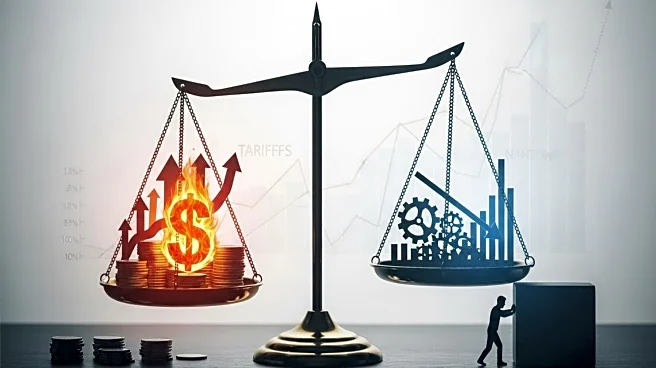What is the story about?
What's Happening?
The Federal Reserve is navigating a complex economic landscape in 2025, as core PCE inflation reached 2.9% year-over-year in July, surpassing the 2% target. This increase is largely attributed to services inflation and tariffs imposed during President Trump's administration, which have complicated the Fed's ability to decisively cut interest rates. Despite persistent inflation, the labor market's weakness and market expectations have led investors to anticipate a 25-basis-point rate cut in September, with an 87% probability. Tariffs on steel, aluminum, and semiconductors have exacerbated supply chain issues, raising costs for manufacturers and consumers, and delaying energy transition projects.
Why It's Important?
The situation underscores the tension between short-term monetary policy expectations and long-term structural shifts in the economy. Tariffs have introduced inflationary pressures that could persist beyond cyclical downturns, potentially reducing long-term GDP by 6% and wages by 5%, according to the Penn Wharton Budget Model. This scenario poses challenges for the Fed's dual mandate of stable prices and maximum employment. The equity market has responded with volatility, particularly in sectors exposed to tariffs, while industries like cybersecurity and defense have gained traction. The Fed's cautious approach reflects the need to balance inflation control with economic growth.
What's Next?
The Federal Reserve's path forward involves reconciling its inflation-fighting resolve with the realities of a globalized economy affected by protectionism. While the market anticipates rate cuts, the Fed's cautious stance suggests that any easing will be incremental. Equity valuations in tariff-exposed sectors are likely to remain volatile until inflation trends become clearer. The Fed's decisions will be closely watched by investors and policymakers, as they navigate the complexities of a reshaped global trade landscape.
Beyond the Headlines
The broader implications of the Fed's dilemma include potential shifts in global trade dynamics and the strategic pivot of companies towards domestic production. Apple's $100 billion investment in U.S. manufacturing and Johnson & Johnson's shift to domestic medical production exemplify this trend. These moves highlight the long-term impact of tariffs on corporate strategies and the potential for increased onshoring in response to protectionist policies.
AI Generated Content
Do you find this article useful?














